Abstract
In contrast to other studies, a recent report from the authors' institution has shown a good prognosis for functional recovery in geriatric patients that survive trauma. Because most survivors regained their pre-injury function, the authors examined factors related to nonsurvival in this population of 82 consecutive blunt trauma victims older than the age of 65. Seventeen patients died (21%). Compared with survivors, nonsurvivors were older, had more severe overall injury, and had more severe head and neck trauma but did not differ in severity of trauma that did not involve the head and neck, number of body regions injured, mechanism of injury, or incidence of surgery after injury. Nonsurvivors experienced more frequent complications (82% vs. 33%, p less than 0.05), including a higher incidence of cardiac complications (53% vs. 15%, p less than 0.05) and ventilator dependence for 5 or more days (41% vs. 14%, p less than 0.05). Mortality rates were increased in patients who were 80 years of age or older compared with those ages 65-79 (46% vs. 10%, p less than 0.01), despite injury of similar severity. More frequent complications may contribute to an increased mortality rate in the older group, including an increased incidence of prolonged mechanical ventilation (36% vs. 12%, p less than 0.025), cardiac complications (54% vs. 10%, p less than 0.01), and pneumonia (36% vs. 16%, p less than 0.06). Severely injured patients (Injury Severity Score [ISS] greater than or equal to 25) older than 80 years old had a mortality rate of 80%, and the survivors required permanent nursing home care. Discriminant analysis yielded a reliable method of differentiating survivors from nonsurvivors based on age, ISS, and the presence of cardiac and septic complications. To assess the accuracy of the discriminant function, 61 consecutive patients admitted during 1985 were reviewed prospectively. Discriminant scoring predicted outcome correctly in 92% of these patients. A Geriatric Trauma Survival Score (GTSS) based on the discriminant function was calculated for each of the 143 patients studied and was highly correlated with mortality rate (r = 0.99, p less than 0.001). Thus, the GTSS may serve as a valuable tool for evaluating death in geriatric trauma victims. Furthermore, because complications are potentially avoidable and contribute to increased mortality rates, routine aggressive care for geriatric patients with moderate overall injury is indicated.
Full text
PDF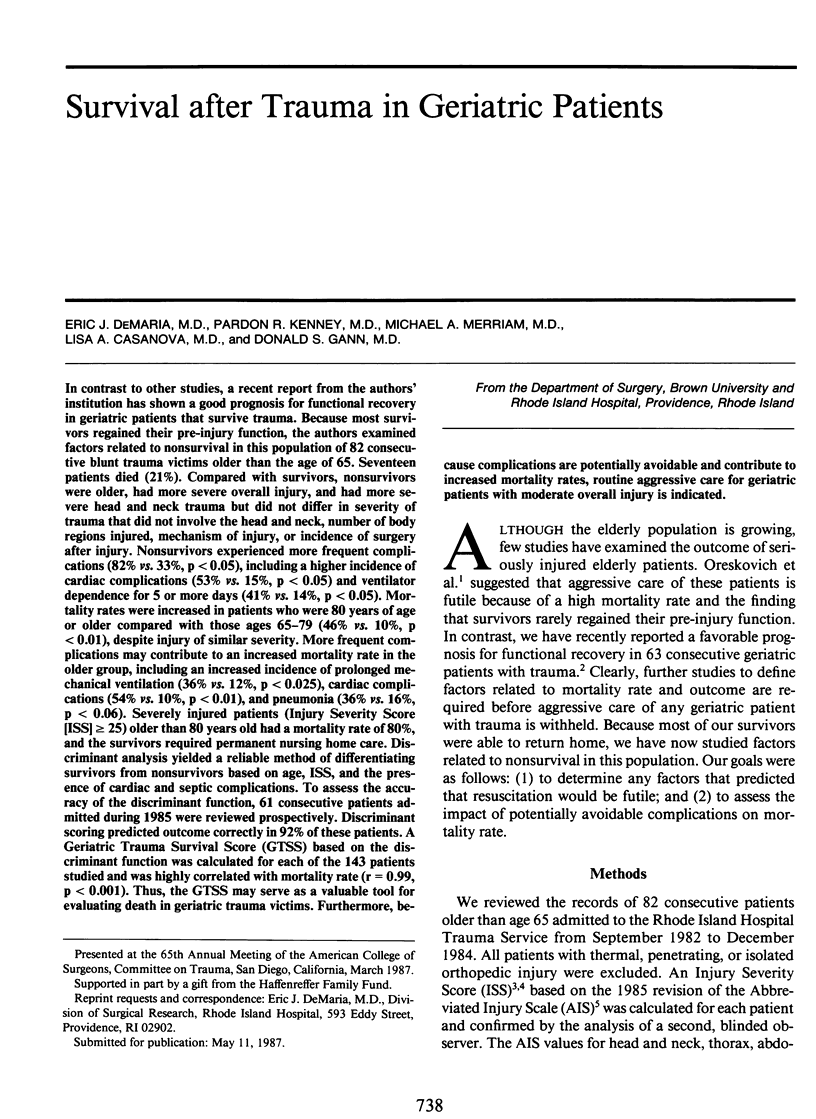
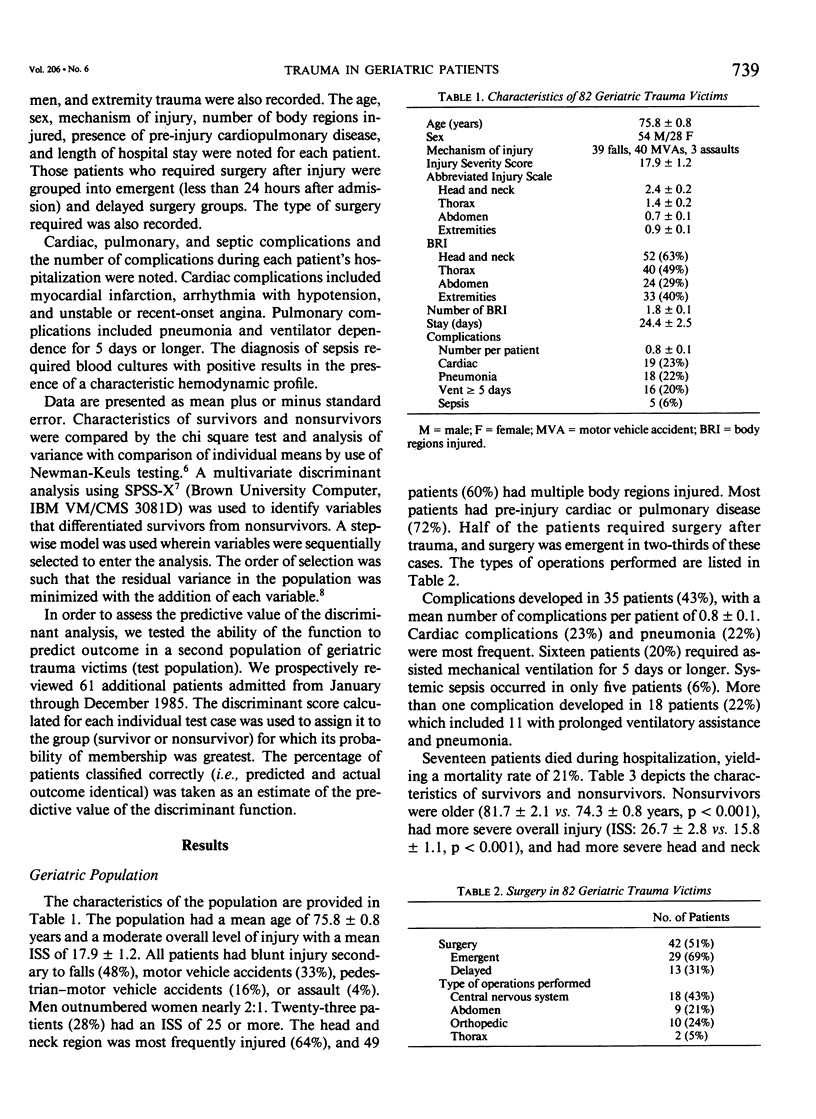
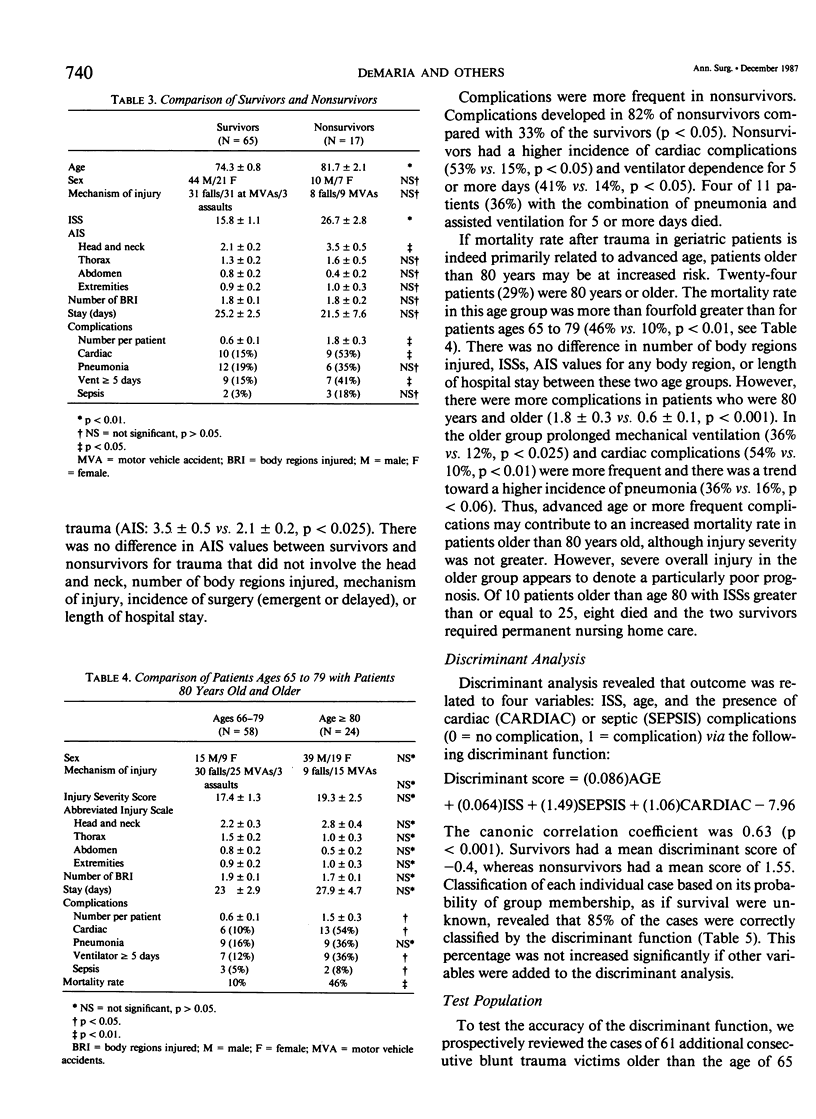
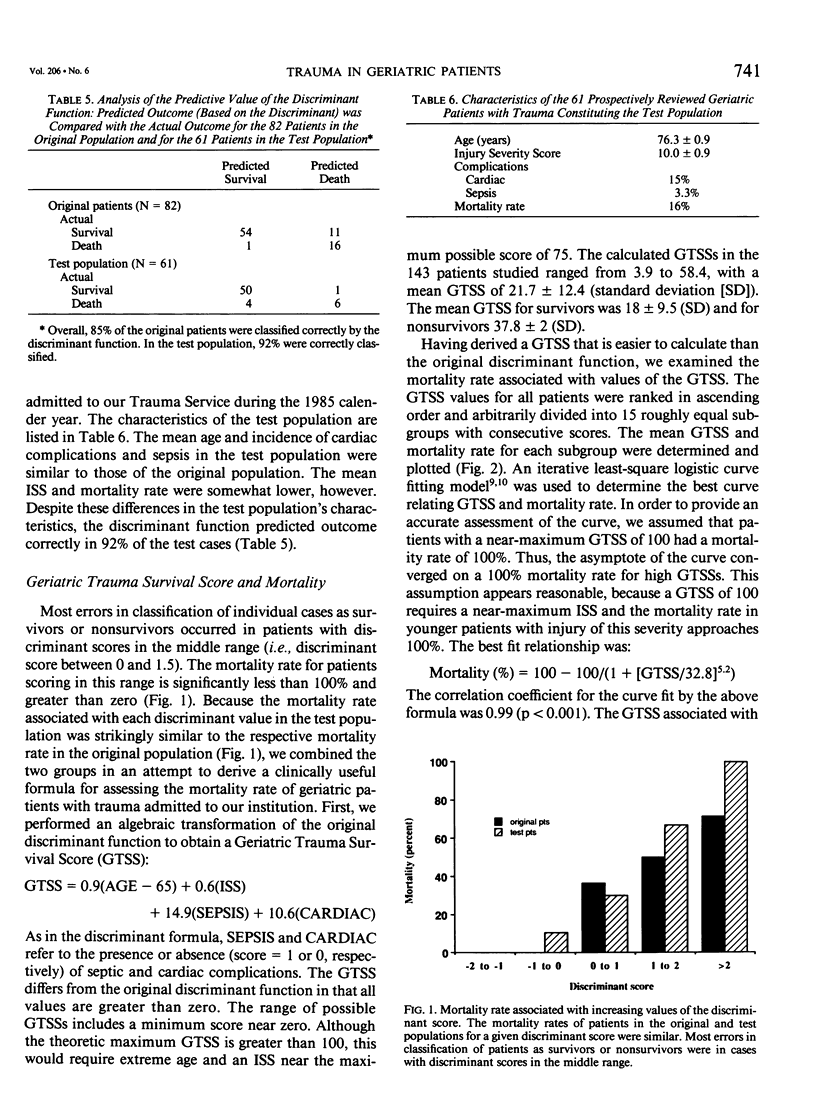
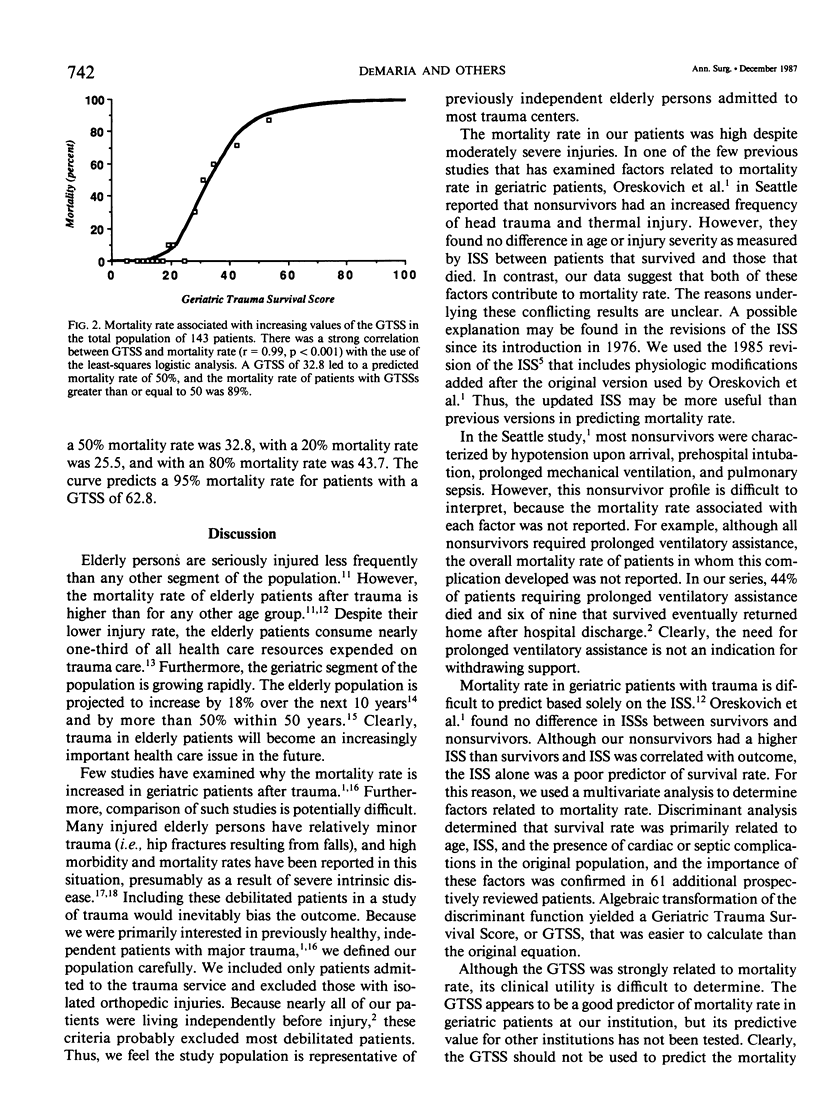
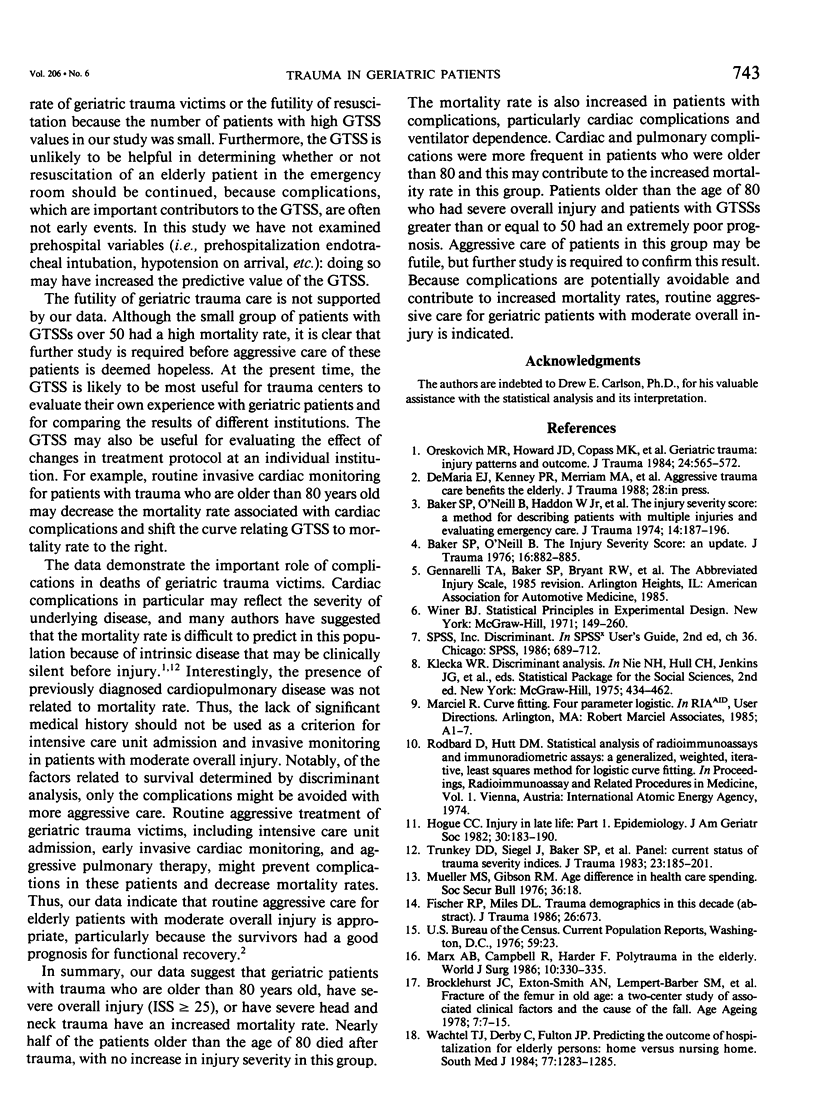
Selected References
These references are in PubMed. This may not be the complete list of references from this article.
- Baker S. P., O'Neill B., Haddon W., Jr, Long W. B. The injury severity score: a method for describing patients with multiple injuries and evaluating emergency care. J Trauma. 1974 Mar;14(3):187–196. [PubMed] [Google Scholar]
- Baker S. P., O'Neill B. The injury severity score: an update. J Trauma. 1976 Nov;16(11):882–885. doi: 10.1097/00005373-197611000-00006. [DOI] [PubMed] [Google Scholar]
- Brocklehurst J. C., Exton-Smith A. N., Lempert Barber S. M., Hunt L. P., Palmer M. K. Fracture of the femur in old age: A two-centre study of associated clinical factors and the cause of the fall. Age Ageing. 1978 Feb;7(1):2–15. doi: 10.1093/ageing/7.1.7. [DOI] [PubMed] [Google Scholar]
- Hogue C. C. Injury in late life: Part I. Epidemiology. J Am Geriatr Soc. 1982 Mar;30(3):183–190. doi: 10.1111/j.1532-5415.1982.tb01302.x. [DOI] [PubMed] [Google Scholar]
- Marx A. B., Campbell R., Harder F. Polytrauma in the elderly. World J Surg. 1986 Apr;10(2):330–335. doi: 10.1007/BF01658158. [DOI] [PubMed] [Google Scholar]
- Mueller M. S., Gibson R. M. Age differences in health care spending, fiscal year 1975. Soc Secur Bull. 1976 Jun;39(6):18–31. [PubMed] [Google Scholar]
- Oreskovich M. R., Howard J. D., Copass M. K., Carrico C. J. Geriatric trauma: injury patterns and outcome. J Trauma. 1984 Jul;24(7):565–572. [PubMed] [Google Scholar]
- Panel: current status of trauma severity indices. J Trauma. 1983 Mar;23(3):185–201. [PubMed] [Google Scholar]
- Wachtel T. J., Derby C., Fulton J. P. Predicting the outcome of hospitalization for elderly persons: home versus nursing home. South Med J. 1984 Oct;77(10):1283-5, 1290. doi: 10.1097/00007611-198410000-00020. [DOI] [PubMed] [Google Scholar]


